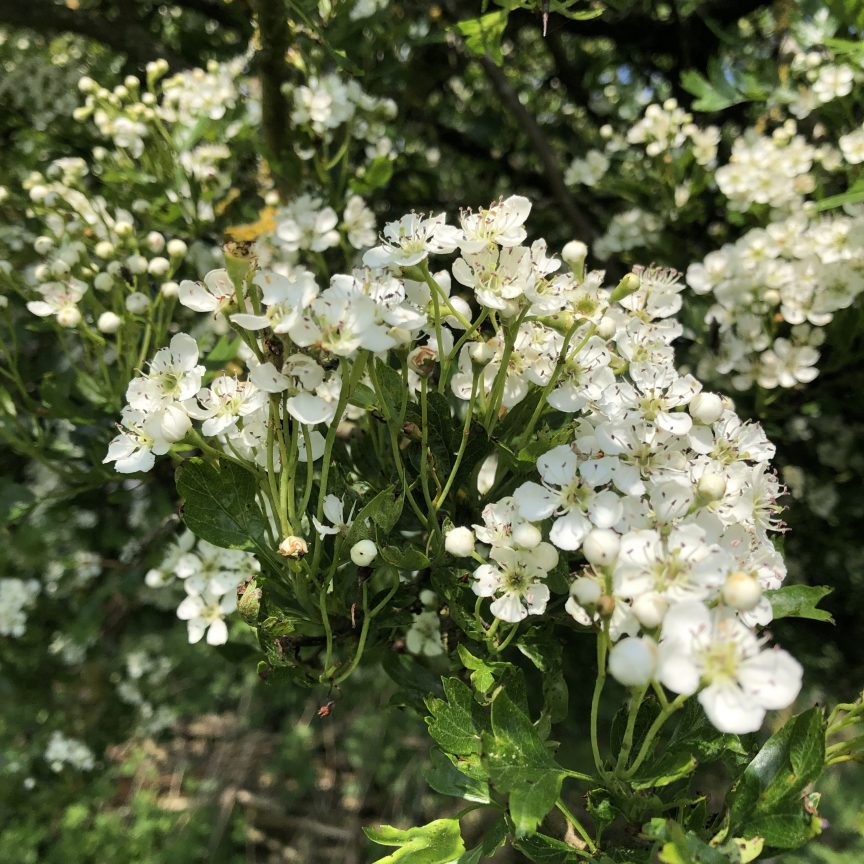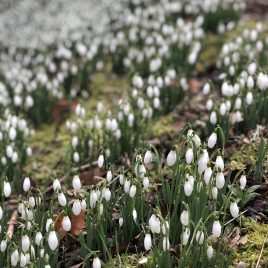
The Darling Buds of May
The seemingly endless dark grey, leaden skies and rainy days that have characterised much of the early part of this year have finally given way to warmth and sunshine. The grass is flourishing and the ewes and lambs are enjoying their days together and we are enjoying them epitomising the word ‘gambol’.
Meanwhile, the many hedgerows we planted at The Lint Mill, are filled with beautiful hawthorn blossom. There is nothing quite so potent or evocative as the heady, sweet smell of hawthorn blossom in May.
My nana used to say that hawthorn was unlucky in the house, so we were never permitted to bring the pretty blossoms inside. Nana was a very superstitious woman and we didn’t always know where these beliefs came from however, it is commonly held that this superstition is associated with the plague. Strong, pleasant smelling flowers and herbs were often used in times of plague to make posies in the hopes that their scent would stop foul air from transmitting the disease from person to person. The ‘pocket full of posies’ in the rhyme Ring a Ring o’ Roses would not really have helped anyone avoid the plague. Nonetheless, there does seem to be a scientific reason behind the smell of the blossoms of common hawthorn having a connection to death; the flowers produce trimethylamine, which also happens to be one of the first chemicals released in decaying animal tissue. Some people say the heavy, musky fragrance is redolent of sex. No wonder my nana wouldn’t let it in the house!
There’s no shortage of folklore associating May blossom with sex, beauty, fertility and death.
It also reminds me of another of my nana’s superstitions. This saying was used as dire warming to my sister and I if we wanted to leave the house dressed optimistically for spring but in my Nana’s opinion just not wearing enough warm clothes! ‘Ne’er cast a clout ‘til May be out’, she would intone ominously as we skipped out without buttoning up our cardigans!
This saying, like many others is contested in its meaning.
The first part simply means ‘never discard your warm winter clothing…’ but it’s the ‘’til May be out’ part where the doubt lies. On the face of it this means ‘until the month of May is ended’, but there is another interpretation. The Hawthorn is also known as the May Tree and the blossom itself is called May blossom. So using that reference, ’til May is out’ could mean, ‘until the hawthorn is in bloom’.
Whichever the meaning, we are delighting in our own ‘darling buds of May’, careless, at last, of our cardigans.



